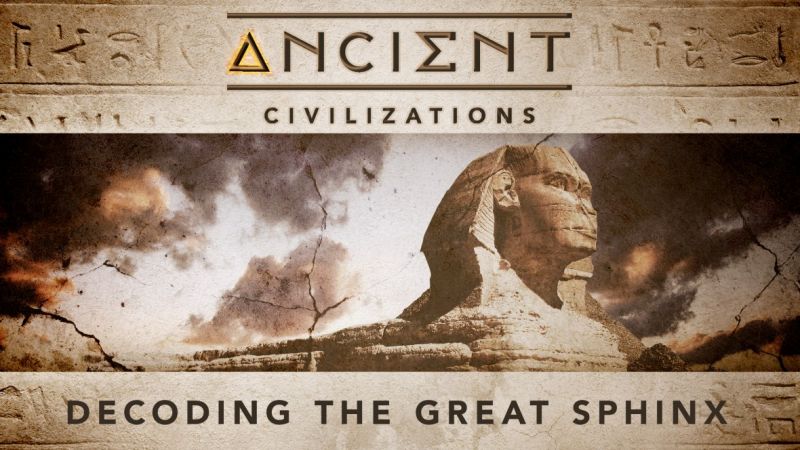Ancient Civilizations – Decoding the Great Sphinx: The great sphinx of Giza, the oldest known monument from the ancient Egyptian world, stands as a symbol of the arcane mysteries still waiting to be unearthed. Could the truth about our past, and Enki’s knowledge given to humanity, be locked in an ancient chamber situated below the great beast’s paw? We examine mounds of evidence, in the face of contradictory conclusions, to try and determine its age and decode its original purpose.
Since times immemorial, humankind has searched for the answers to who we are, where we came from and why are we here. Embedded into ancient mythology and our forgotten history, is a code which unlocks our connection with transcendence and paves the way for a new golden age.
Ancient Civilizations – Decoding the Great Sphinx
The Great Sphinx of Giza is a limestone statue of a reclining sphinx, a mythical creature with the head of a human, and the body of a lion. Facing directly from west to east, it stands on the Giza Plateau on the west bank of the Nile in Giza, Egypt. The face of the Sphinx appears to represent the pharaoh Khafre.
Cut from the bedrock, the original shape of the Sphinx has been restored with layers of limestone blocks. It measures 73 m (240 ft) long from paw to tail, 20 m (66 ft) high from the base to the top of the head and 19 m (62 ft) wide at its rear haunches. Its nose was broken off for unknown reasons between the 3rd and 10th centuries AD.
The Sphinx is the oldest known monumental sculpture in Egypt and one of the most recognisable statues in the world. The archaeological evidence suggests that it was created by ancient Egyptians of the Old Kingdom during the reign of Khafre (c. 2558–2532 BC)
The Sphinx is a monolith carved from the bedrock of the plateau, which also served as the quarry for the pyramids and other monuments in the area. Egyptian geologist Farouk El-Baz has suggested that the head of the Sphinx may have been carved first, out of a natural yardang, i.e. a ridge of bedrock that had been sculpted by the wind. These can sometimes achieve shapes which resemble animals. El-Baz suggests that the “moat” or “ditch” around the Sphinx may have been quarried out later to allow for the creation of the full body of the sculpture.
